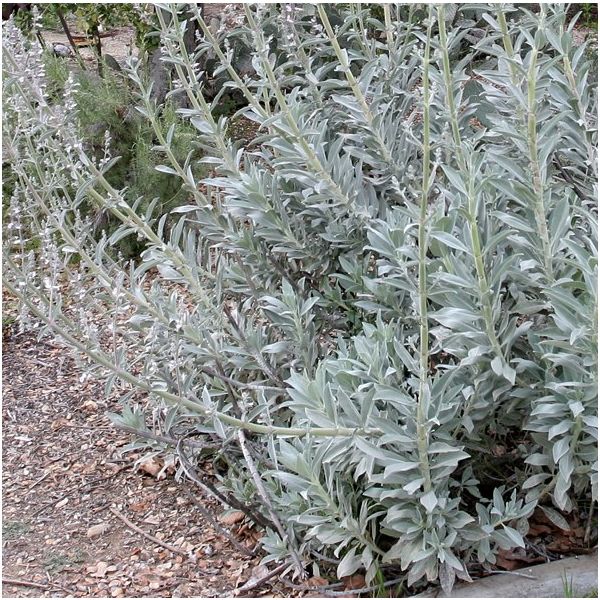| Latin Name : | Salvia apiana |
| English Name : | White sage, Bee Sage |
| French Name : | Sauge blanche |
| Family : | Lamiaceae |
| Origin : | United States |
History and Origin
White sage is native to the South-western part of North America. It likes dry and well-drained soils. Its flowers are hermaphrodite and pollinated by the bees and other pollen gatherers. The Native people use it in their spiritual ceremonies and as a polyvalent remedy. In a sweat bath, it treats flu and colds. Crushed leaves are used to prepare a shampoo, a dye and a hair-straightener. The leaves can also be smoked or eaten. It is interesting to note that white sage would also be used to avoid bad luck if a menstruating woman accidentally touched hunting equipment… White sage is sacred for Native People who use it to make smudge wands. White sage is known to purify the aura from bad energies.





